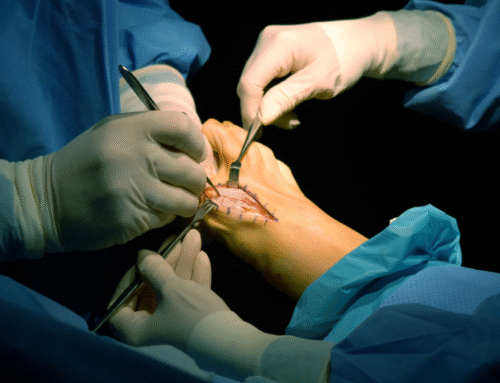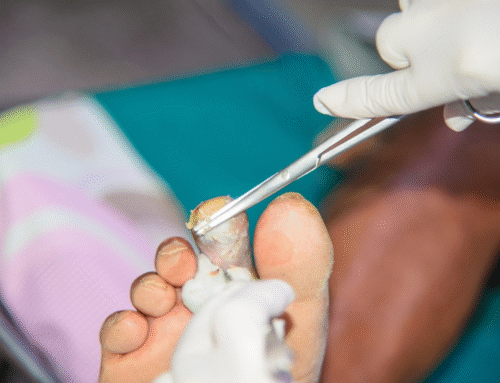The prospect of surgery can be daunting, especially when traditional open procedures evoke images of large incisions, prolonged hospital stays, and considerable discomfort. Fortunately, advancements in medical technology have ushered in minimally invasive orthopedic surgery (MIS), offering a promising alternative for many patients. This article delves into the realm of MIS, exploring its benefits, the procedures it encompasses, and who stands to benefit the most. By understanding these advantages, patients can make informed decisions regarding their orthopedic care.
Understanding Minimally Invasive Orthopedic Surgery
Minimally invasive surgery involves small incisions, specialized instruments, and magnified visualization techniques to address orthopedic issues, contrasting with traditional open surgery’s need for larger incisions. The primary goal of MIS is to minimize disruption to healthy tissues surrounding the surgical site. This approach offers several compelling benefits for patients:
- Reduced Scarring: Smaller incisions result in less noticeable scarring, which is particularly advantageous for surgeries involving visible areas like the knee or shoulder.
- Faster Recovery: With minimal tissue disruption, recovery times are typically shorter. This allows patients to resume their daily activities sooner and facilitates a smoother transition to normal life.
- Reduced Pain: Minimally invasive techniques often result in less postoperative pain due to reduced tissue damage and inflammation. Specialized tools and techniques also help minimize discomfort during the procedure itself.
- Lower Risk of Infection: Smaller incisions decrease the potential entry points for bacteria, thereby lowering the risk of postoperative infections.
- Improved Outcomes: Enhanced visualization and specialized instrumentation in MIS can contribute to improved surgical precision, potentially leading to better long-term results.
Candidates for Minimally Invasive Orthopedic Surgery
While MIS offers significant advantages, not all patients are suitable candidates. The decision depends on factors such as:
- Condition Complexity: Complex conditions requiring extensive reconstruction may necessitate traditional open surgery.
- Patient Anatomy: Anatomical considerations can affect the feasibility of minimally invasive techniques.
- Overall Health: Patients with underlying medical conditions may face increased surgical risks with MIS.
Consulting with a qualified orthopedic surgeon is crucial to determine the suitability of MIS for individual needs. During the consultation, thorough evaluation of the condition, medical history, and relevant factors will guide an informed recommendation.
Common Minimally Invasive Orthopedic Procedures
MIS encompasses a wide range of procedures addressing various orthopedic conditions. Here are some commonly performed minimally invasive surgeries:
Joint Procedures:
- Knee Arthroscopy: Utilizes a tiny camera for procedures such as meniscus repair, cartilage restoration, and ACL reconstruction with minimal tissue disruption.
- Shoulder Arthroscopy: Facilitates repairs like rotator cuff and labrum repairs with enhanced precision.
- Hip Arthroscopy: Diagnoses and treats conditions such as labral tears and impingement syndromes through small incisions.
Hand and Wrist Procedures:
- Wrist Arthroscopy: Visualizes and treats wrist issues like ligament tears or cartilage damage.
Sports Medicine Procedures:
- Rotator Cuff Repair: Restores shoulder function with minimal tissue impact.
- ACL Reconstruction: Uses smaller incisions for faster recovery and improved knee stability.
- Meniscus Repair: Enhances knee function by repairing tears with minimal tissue disruption.
Other Minimally Invasive Orthopedic Procedures:
- Bone Fracture Repair: Stabilizes fractures using small plates or screws.
- Tendonitis Treatment: Addresses tendon inflammation or damage with minimal impact.
Important Considerations
While MIS offers numerous benefits, it may not always be suitable for every patient. Key considerations include:
- Condition Complexity: Complex cases may require traditional open surgery for optimal treatment.
- Surgeon Expertise: Success with MIS hinges on the surgeon’s skill. Choosing an experienced orthopedic surgeon proficient in these techniques is crucial.
- Potential for Conversion: Unforeseen circumstances during surgery may necessitate switching to an open approach.
Conclusion
Minimally invasive orthopedic surgery represents a significant advancement, providing patients with a viable alternative to traditional open procedures. By utilizing smaller incisions, specialized tools, and advanced visualization, MIS offers the potential for faster recovery, reduced pain, and improved quality of life. To determine if MIS is suitable for your specific condition and needs, consult with a qualified orthopedic surgeon who can provide expert guidance and personalized care.
Dr. Tec’s Experience and Expertise
Dr. Tec brings extensive experience in minimally invasive orthopedic surgery, ensuring patients receive compassionate care and optimal outcomes. Contact us today to schedule a consultation and explore how MIS can benefit you.






